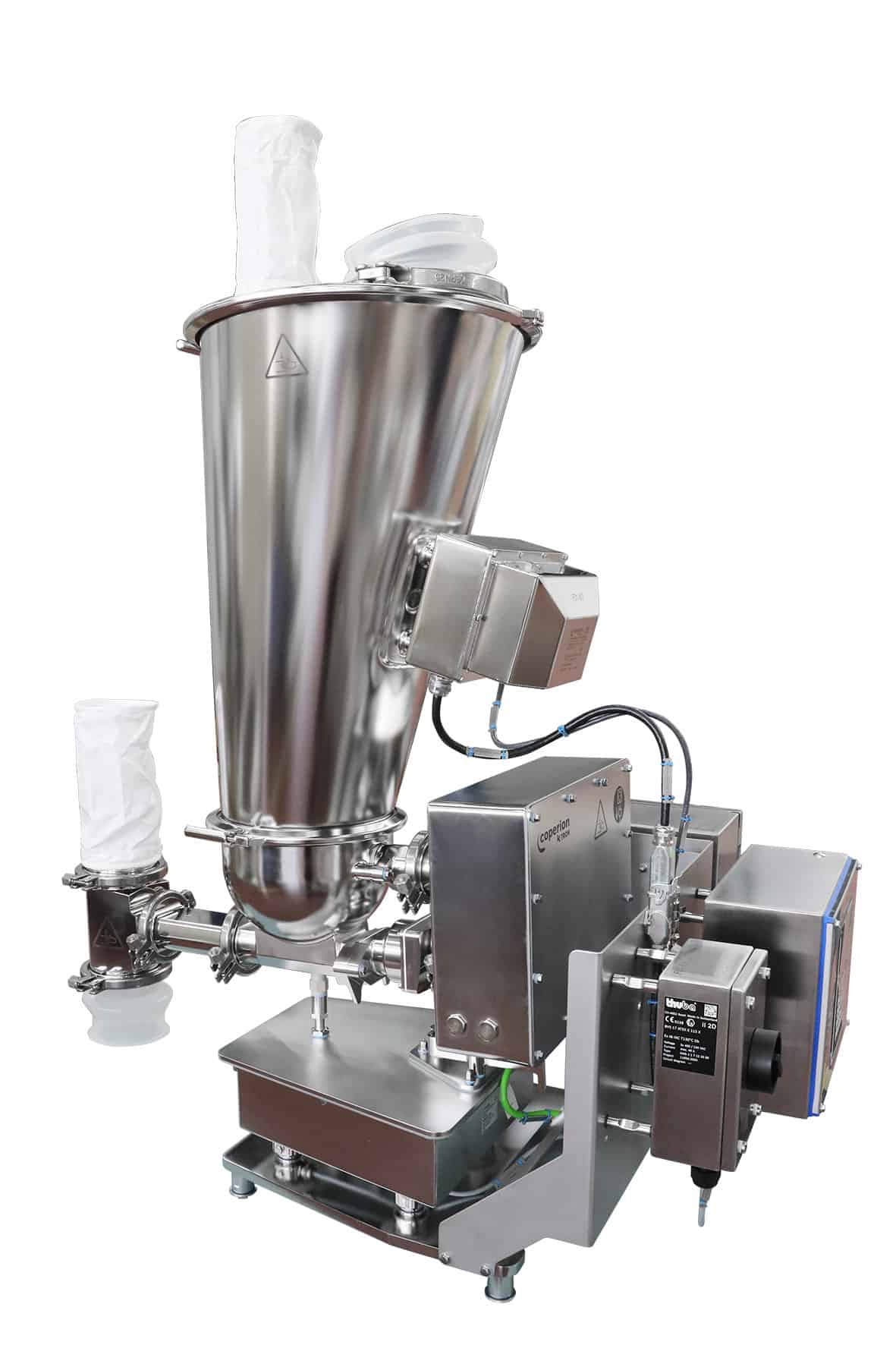Segregation, ‘flushing’, density variations, ‘caking’, and other adverse flow and quality conditions can all be aggravated by uneven extraction. Optimum feeder performance is secured by each section of the feeder extracting a proportionate region of the hopper cross-section that it serves. This can be a challenging task. Mass flow is often cited as generating a ‘first in, first out’ pattern that mitigates these discharge hazards, but mass flow merely means that all the hopper contents are in motion during discharge and wide velocity gradients can prevail. Much talk is made of ‘even extraction’, but this is usually considered to apply to the inlet of the feeder when it should relate to the cross-section of the hopper body, as large differences may exist between the cross-sectional areas that are served by a different section of the feeder.
For example – Consider a 6 M square section hopper with a pyramid hopper fitted with a feeder 2 M long. The first and last 10% of the feeder inlet would need to extract 11 times the amount of each of the other 10% sections to give even drawdown in the hopper. At the other extreme, with a 2M long feeder on a 2M dia. silo, the first and last 10% of the feeder would need to take a minuscule amount, with extraction requirement in subsequent sections rising quickly with the local radius, to a maximum at the center. In most applications, there is a step-change in extraction demand for the initial and final sections of the feeder exposed to the hopper contents.
A screw feeder is usually shorter than the largest span across a hopper and flows from hopper regions to various sections of the feeder are often a combination of linear and radial flow, so the capacity demand per unit length of the feeder for ‘uniform extraction’ can be a demanding exercise to reconcile with the geometric characteristic of screw extraction, namely: –
- The first section of screw exposed to the hopper contents extracts the full axial transfer capacity of the screw, whereas subsequent sections can only extract the incremental difference in capacity.
- Increases in pitch do not extract a proportionate increase in capacity due to the reduction in axial transfer efficiency. The efficiency of axial transfer depends on the screw geometry and angle of contact friction of the material handled, so the feeder specification is dependent on many factors unique to the application.
- In addition, pitch increases do have to serve proportionately long sections of the outlet so the actual extraction rate per unit length reduces.
- Axial transfer efficiency depends on the contact friction of the material handled on the face of the screw flight, so is unique to the specific application.
In the light of these features it is important to know if the product will be affected by the lengths of time that it may be held in static storage; either too long, in relation to a potential deterioration in product quality or flow condition, or too short in relation to the material settling from a fluid to a stable flow condition. Searching inquiries to establish the optimum specification for a feeder can require close cooperation between supplier and user, so it is best to deal with a specialist supplier in important cases.















































